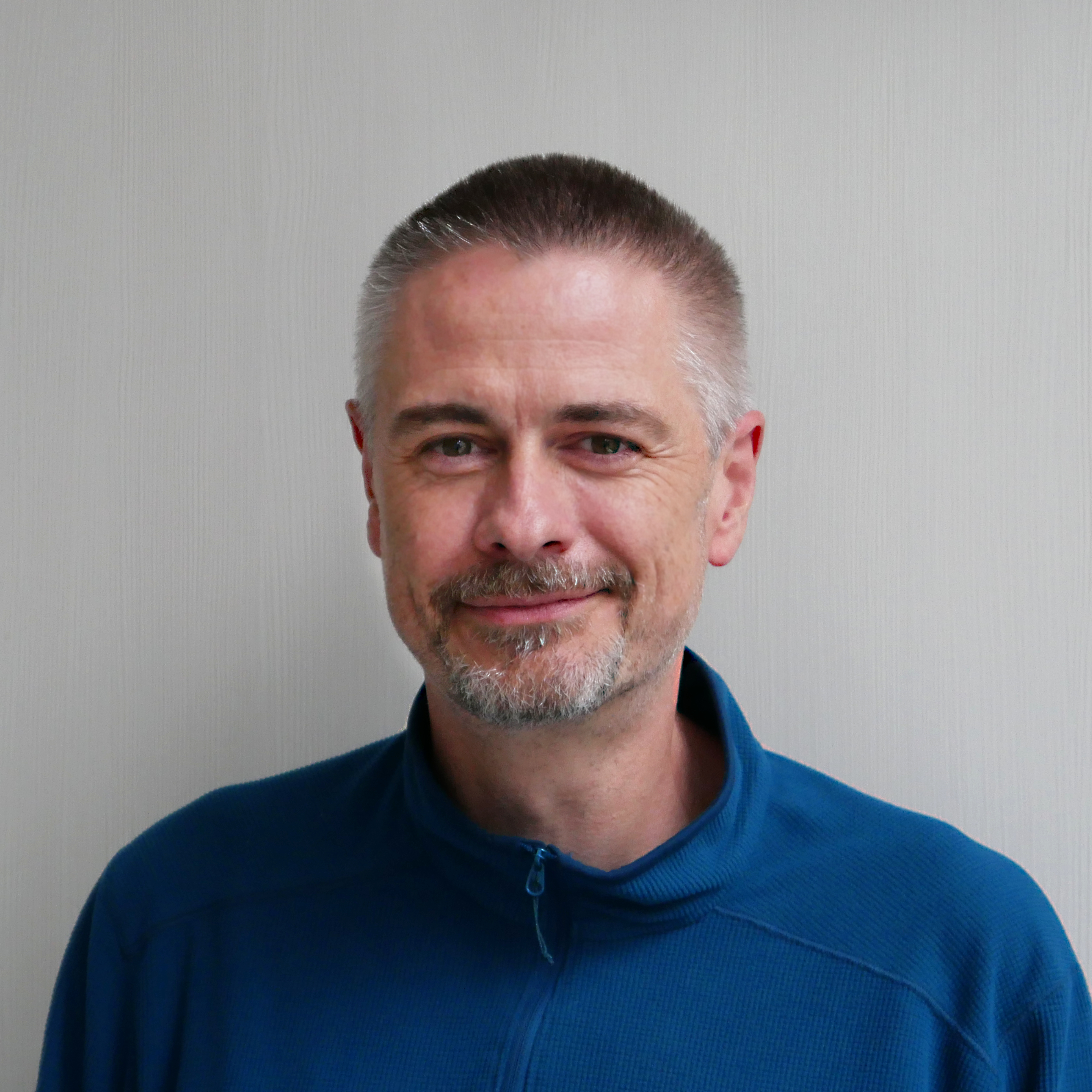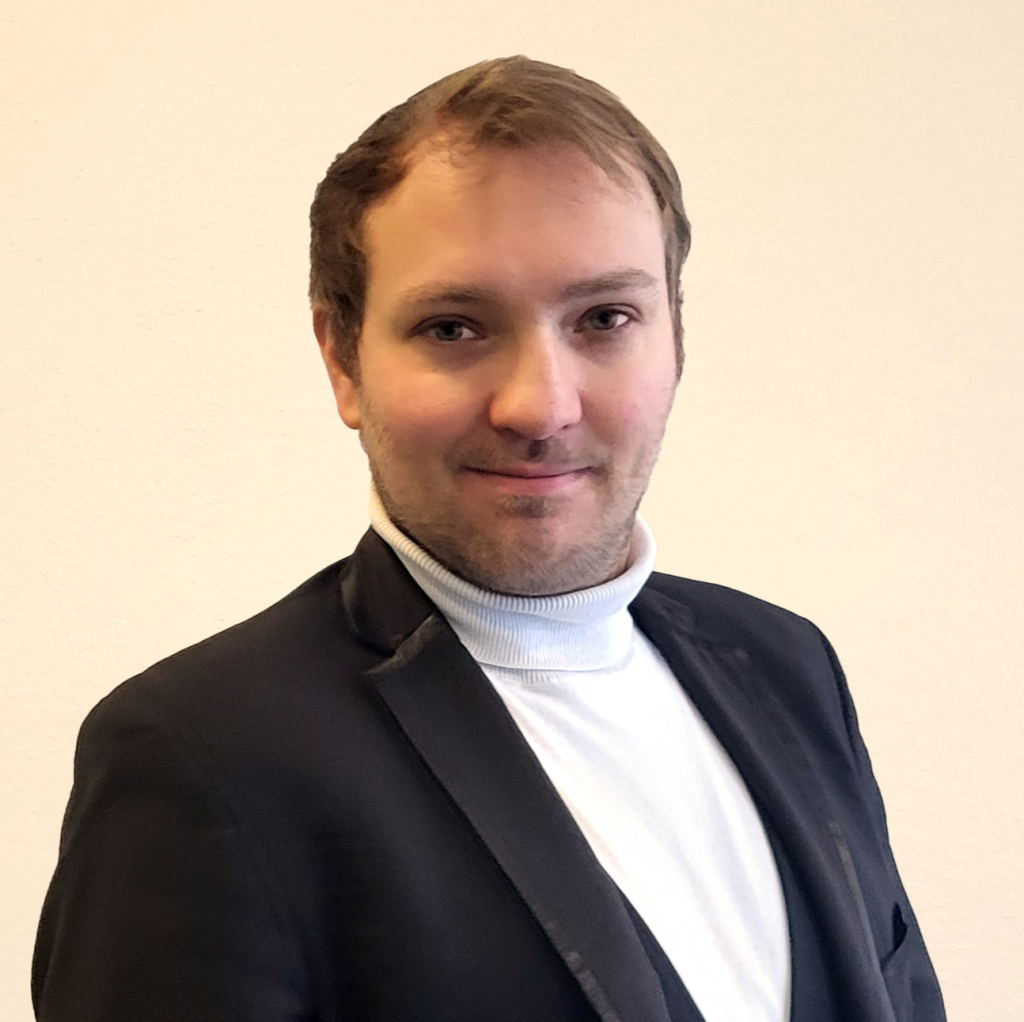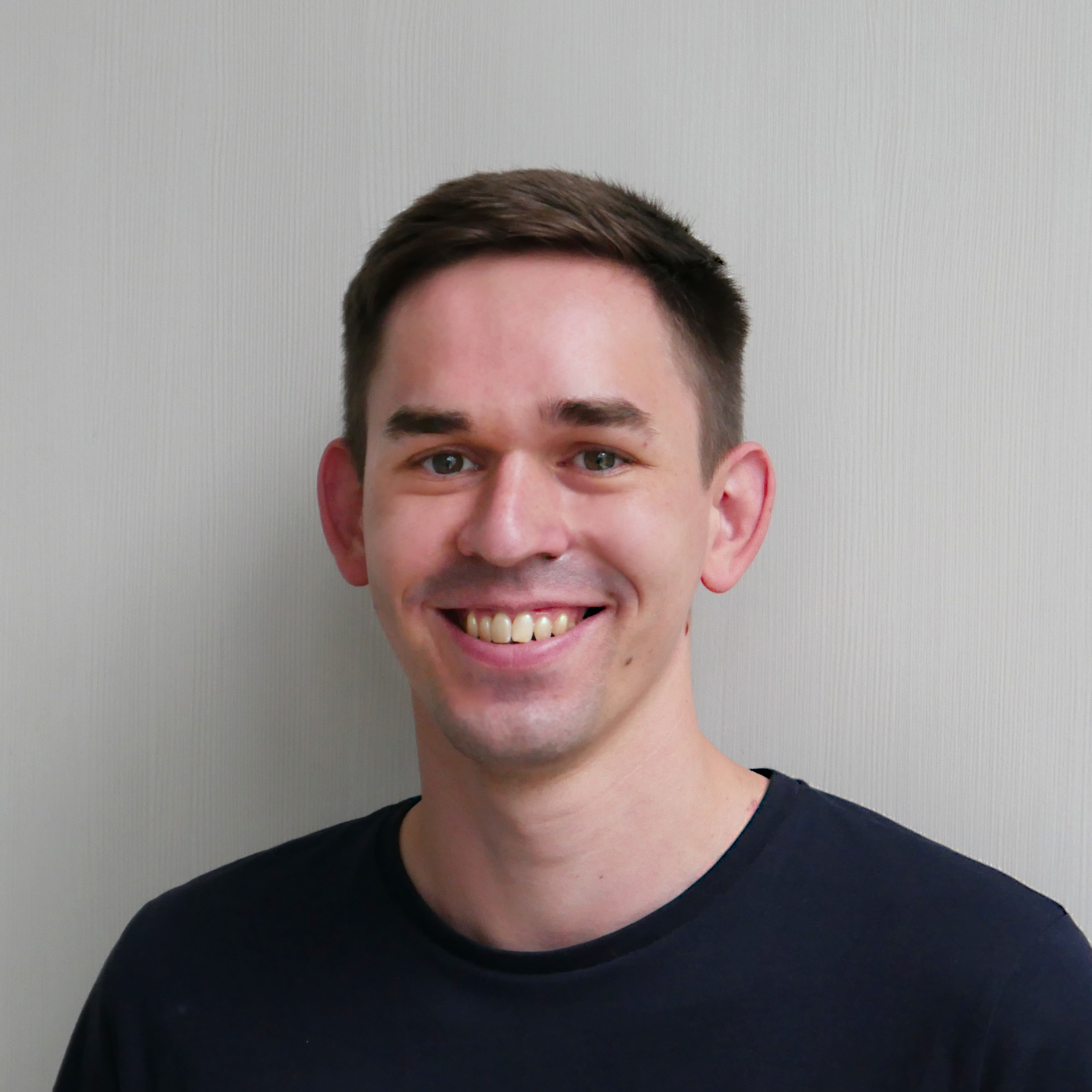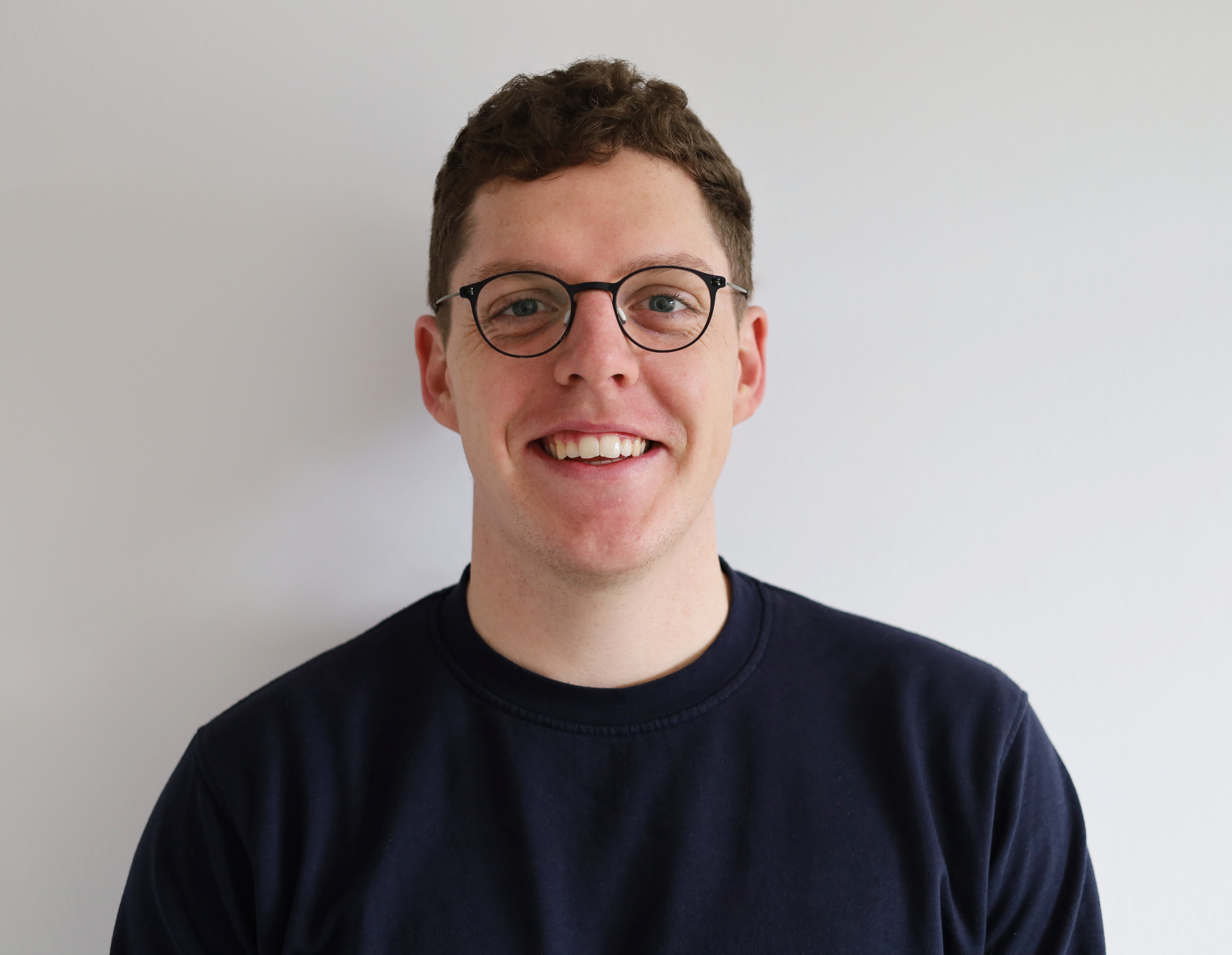
Prof. Dr. Ulrich Schwaneberg
The Schwaneberg group has its core competence in protein engineering. At RWTH we combine directed evolution methodologies and rational design to discover fundamental design principles of proteins. At the DWI we employ engineered proteins to integrate functionalities into polymers. For instance, the adhesion promoting peptide platform employs adhesion promoting peptides that bind as (dense) monolayer on all kind of surfaces, including polymers, metal alloys, ceramics, plant leaves, teeth etc., at ambient temperature by simple dip coating in water. Adhesion promoter decorated surfaces are advanced to biohybrid systems through subsequent orthogonal sortase reactions or chemical conjugations. Specificity, binding strength and interactive properties are tailored through novel/developed directed evolution methodologies. Application areas comprise for instance release systems for plant as well as medical health (conjugated to microgels), in microplastic management and as (anti-microbial) surface coatings (as bifunctional fusion peptides).
Curriculum Vitae
Ulrich Schwaneberg studied chemistry at the University of Stuttgart and received his PhD under the supervision of Prof. R. D. Schmid, Institute of Technical Biochemistry at the University of Stuttgart. After his graduation in 1999, he was a post-doctoral fellow in the lab of Prof. F. H. Arnold at Caltech, Nobel laureate in 2018, for two years. In January 2002, he was appointed as professor at the Jacobs University Bremen. In 2009 he moved to RWTH Aachen University and became director of the Institute of Biotechnology. Since 2010 he is co-appointed at the DWI – Leibniz Institute for Interactive Materials. Notably, he is a member of the board of directors in the Bioeconomy Science Center and serves as speaker of the industry lab HICAST, the Henkel Innovation Campus for Advanced and Sustainable Technologies. He is a co-inventor on a number of patents of several improved enzymes, which have been transferred to industrial use. In 2008, he co-founded the SeSaM-Biotech GmbH, which offers directed evolution services. In 2013, he received a visiting professorship for senior international scientists of the Chinese Academy of Science, in 2015 a specially appointed professorship at Osaka University, in 2016 the 1.7 M € BMBF award for the Next Generation of Biotechnological Processes, and in 2018 the Innovation Award of the BioRegions in Germany for the greenRelease technology. He has a special interest in protein engineering and understanding underlying molecular principles, resulting in more than 220 manuscripts so far.
Selected professional functions, honors and awards
- 2022-2026: Speaker/Coordinator of the Bio4MatPro - Competence Centre for the Biological Transformation of Materials Science & Production Engineering (>50 partners; 26,3 Mio€)
- 2022-2026: Coordinator of the BioökonomieRevier – Innovation Labs ProtLabSF and PlastiQuant 2.0 (10 PIs; 5.4 Mio€; BMBF)
- Since 2021 Speaker of the RWTH profile area Molecular Science and Engineering
- Since 2020 Co-Chair der Division Biocatalysis in der European Federation of Biotechnology
- Since 2020 Member of the Advisory Board of CLIB (Cluster Industrial Biotechnology)
- Since 2019 Member of the Expert Council for Bioeconomy at MWIDE (Ministry of Economic Affairs, Innovation, Digitalization and Energy NRW)
- Since 2019 Coordinator of two innovation labs (InnoLabs ProtLab and PlastiQuant)
- 2016 BMBF Research Prize for the next generation of biotechnological processes (€ 1.75 million)
- 2015-2019 Spokesman of the Henkel Innovation Campus for Advanced and Sustainable Technologies HICAST (5 million € direct company funds)
- 2015 Specially appointed professor at Osaka University (visiting professorship)
- 2013/14 Visiting Professorship of Senior International Scientists of the Chinese Academy of Science (Sabbatical in 2014 at the TIB in Tianjin)
- Since 2010 Representative of the RWTH in the steering committee of the Bioeconomy Science Center (58,5 Mio €; 10-year project)
Publications
| Titel/Autoren | DOI-LINK | Magazine | Jahre | |
|---|---|---|---|---|
|
Engineered phytases for emerging biotechnological applications beyond animal feeding
K. R. Herrmann, A. J. Ruff, B. Infanzon and U. Schwaneberg
|
https://www.doi.org/10.1007/s00253-019-09962-1 | Appl Microbiol Biotechnol | 2019 | |
|
High Throughput Screening Method for Engineering P450 Towards Terminal Hydroxylation of Fatty Acids
S. Q. Meng, J. Guo, K. L. Nie, U. Schwaneberg, T. W. Tan, H. J. Xu and L. Liu
|
https://doi.org/10.1166/jbmb.2019.1816 | Journal of Biobased Materials and Bioenergy | 2019 | |
|
How To Engineer Ionic Liquids Resistant Enzymes: Insights from Combined Molecular Dynamics and Directed Evolution Study
S. Pramanik, G. V. Dhoke, K.-E. Jaeger, U. Schwaneberg and M. D. Davari
|
https://www.doi.org/10.1021/acssuschemeng.9b00752 | ACS Sustainable Chemistry & Engineering | 2019 | |
|
In Situ Monitoring of Membrane Protein Insertion into Block Copolymer Vesicle Membranes and Their Spreading via Potential-Assisted Approach
T. Mirzaei Garakani, Z. Liu, U. Glebe, J. Gehrmann, J. Lazar, M. A. S. Mertens, M. Moller, N. Hamzelui, L. Zhu, U. Schnakenberg, A. Boker and U. Schwaneberg
|
https://www.doi.org/10.1021/acsami.9b09302 | ACS Appl Mater Interfaces | 2019 | |
|
KnowVolution of a Fungal Laccase toward Alkaline pH
C. Novoa, G. V. Dhoke, D. M. Mate, R. Martinez, T. Haarmann, M. Schreiter, J. Eidner, R. Schwerdtfeger, P. Lorenz, M. D. Davari, F. Jakob and U. Schwaneberg
|
https://www.doi.org/10.1002/cbic.201800807 | Chembiochem | 2019 | |
|
Matter-tag: A universal immobilization platform for enzymes on polymers, metals, and silicon-based materials
S. Dedisch, A. Wiens, M. D. Davari, D. Söder, C. Rodriguez-Emmenegger, F. Jakob and U. Schwaneberg
|
https://www.doi.org/10.1002/bit.27181 | Biotechnology and Bioengineering | 2019 | |
|
Membrane-Mimetic Dendrimersomes Engulf Living Bacteria via Endocytosis
N. Y. Kostina, K. Rahimi, Q. Xiao, T. Haraszti, S. Dedisch, J. P. Spatz, U. Schwaneberg, M. L. Klein, V. Percec, M. Moller and C. Rodriguez-Emmenegger
|
https://www.doi.org/10.1021/acs.nanolett.9b02349 | Nano Lett | 2019 | |
|
One-Pot Two-Step Chemoenzymatic Cascade for the Synthesis of a Bis-benzofuran Derivative
M. A. S. Mertens, F. Thomas, M. Nöth, J. Moegling, I. El-Awaad, D. F. Sauer, G. V. Dhoke, W. Xu, A. Pich, S. Herres-Pawlis and U. Schwaneberg
|
https://www.doi.org/10.1002/ejoc.201900904 | European Journal of Organic Chemistry | 2019 | |
|
Rapid and Robust Coating Method to Render Polydimethylsiloxane Surfaces Cell-Adhesive
D. B. Gehlen, L. C. De Lencastre Novaes, W. Long, A. J. Ruff, F. Jakob, T. Haraszti, Y. Chandorkar, L. Yang, P. van Rijn, U. Schwaneberg and L. De Laporte
|
https://www.doi.org/10.1021/acsami.9b16025 | ACS Appl Mater Interfaces | 2019 | |
|
Rational surface engineering of an arginine deiminase (an antitumor enzyme) for increased PEGylation efficiency
F. Cheng, J. Yang, U. Schwaneberg and L. Zhu
|
https://www.doi.org/10.1002/bit.27011 | Biotechnol Bioeng | 2019 | |
|
Selective Functionalization of Microgels with Enzymes by Sortagging
Z. Zou, E. Gau, I. El-Awaad, F. Jakob, A. Pich and U. Schwaneberg
|
https://www.doi.org/10.1021/acs.bioconjchem.9b00568 | Bioconjugate Chemistry | 2019 | |
|
Stimuli-Responsive Poly(N-Vinyllactams) with Glycidyl Side Groups: Synthesis, Characterization, and Conjugation with Enzymes
H. Peng, K. Rubsam, C. Hu, F. Jakob, U. Schwaneberg and A. Pich
|
https://www.doi.org/10.1021/acs.biomac.8b01608 | Biomacromolecules | 2019 |





